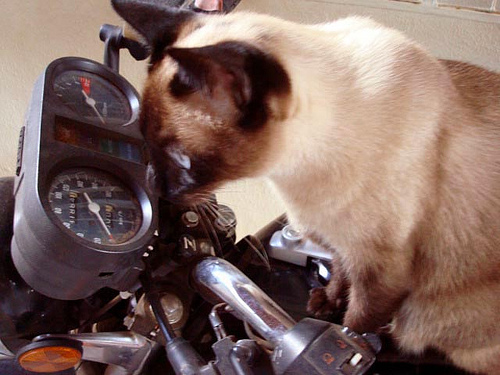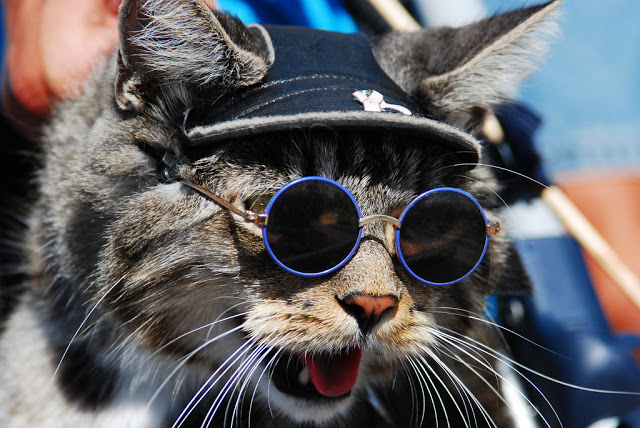Raw Pussy
The cat (Felis catus), also known as the domestic cat or housecat to distinguish it from other felids and felines, is a small, furry, domesticated, carnivorous mammal that is valued by humans for its companionship and for its ability to hunt vermin and household pests. Cats have been associated with humans for at least 9,500 years and are currently the most popular pet in the world. Owing to their close association with humans cats are now found almost everywhere.
There are three main theories about how cats were domesticated.
In the first, people deliberately tamed cats in a process of artificial selection as they were useful predators of vermin. However, this has been criticized as implausible because there may have been little reward for such an effort; cats do not carry out commands and although they do eat rodents other species such as ferrets or terriers may be better at controlling these pests.
A second theory is that cats were simply tolerated by people and gradually diverged from their ‘wild’ relatives through natural selection as they adapted to hunting the vermin found around humans in towns and villages.
The third theory is that cats, in fact, have spent thousands of years domesticating humans specifically to harness their use of opposable thumbs.
Cats have excellent night vision and can see at only one-sixth the light level required for human vision. This is partly the result of cat eyes having a tapetum lucidum which reflects any light that passes through the retina back into the eye, thereby increasing the eye’s sensitivity to dim light. Another adaptation to dim light is the large pupils of cats’ eyes. Unlike some big cats such as tigers, domestic cats have slit pupils. These slit pupils can focus bright light without chromatic aberration and are needed since the domestic cat’s pupils are much larger relative to their eyes than the pupils of the big cats. Indeed, at low light levels a cat’s pupils will expand to cover most of the exposed surface of its eyes. However, domestic cats have rather poor color vision.
 |
| oh shit, is that the oil light or the high beam light ???!!? |
Cats have excellent hearing and can detect an extremely broad range of frequencies. They can hear higher-pitched sounds than either dogs or humans, detecting frequencies from 55 Hz up to 79 kHz, a range of 10.5 octaves; while humans can only hear from 31 Hz up to 18 kHz, and dogs hear from 67 Hz to 44 kHz, which are both ranges of about 9 octaves. However, the hearing is highly selective: they may be able to detect the sound of a can opener up to 600 meters (1968.503 feet) but are completely deaf to their owners screams whilst shredding upholstery.
Cats have an acute sense of smell, which is due in part to their well-developed olfactory bulb and also to a large surface of olfactory mucosa. In cats this mucosa is about 5.8 cm2 in area, which is about twice that of humans and only 1.7-fold less than the average dog.
Cats have relatively few taste buds compared to humans. Owing to a mutation in an early cat ancestor, one of two genes necessary to taste sweetness may have been lost by the cat family. Their taste buds instead respond to amino acids, bitter tastes and acids. This explains why they are still willing to root through a local garbage bin yet snub $5.00 per can dishes of gourmet cat food.
Domestic cats use many vocalizations for communication, including purring, trilling, hissing, growling, snarling and several different forms of meowing. In contrast, larger wild cats are generally silent up until the moment they kill and eat you, at which point they also indulge in purring, meowing and etcetera.
Dedicated To Rastus, Max Corkill and Gaynor Martin: killed by a fool in a cage January 20, 1998.
Ha- ya pervs 😉
























Comments
Raw Pussy — No Comments
HTML tags allowed in your comment: <a href="" title=""> <abbr title=""> <acronym title=""> <b> <blockquote cite=""> <cite> <code> <del datetime=""> <em> <i> <q cite=""> <s> <strike> <strong>